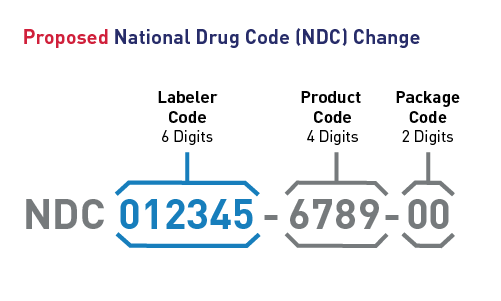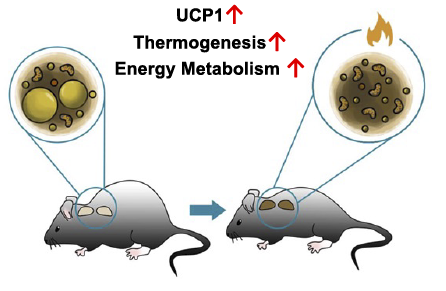Frog skins for diabetics, splitting the FDA, 5000 years of kissing (and herpes), and more
29 Jul 2022
Posted by Andrew Kantor
Taking the F out of the FDA?
Some people forget that the “F” in FDA stands for food — not federal or farmaceutical. So a pair of U.S. congresscritters — one in the House, one in the Senate — are proposing that FDA be split, with the food portion becoming its own agency: the Food Safety Administration.
…to protect the public health by ensuring the safety of food, preventing foodborne illness, maintaining safety reviews and reassessments of food additives, enforcing pesticide residue tolerances, improving the surveillance of foodborne pathogens, and for other purposes.
Trigger warning: Some people may be disturbed by the fact that one of the legislators has purple hair.
Sign up today for Ready. Aim. Phire!
Take out life’s frustrations on innocent clay disks TK, eat some awesome barbecue, hang out with friends, drink some beer if you’re so inclined, and shoot things. (Not in that order.)
Ready. Aim. Phire! is always a ton of fun, a chance to get outside and remind yourself about that big yellow ball in the sky, and something something network with colleagues. And shoot things without legal repercussions. All to help support the Georgia Pharmacy Foundation.

Sporting clays, you ask? It’s like a cross between — oh, forget it. You get a big gun. You shoot clay disks in the air. There’s scorekeeping, competition, golf carts, and fully paid insurance premiums. We’ll even throw in a raffle. It’s all on the Big Red Oak Plantation: 2500 acres of primeval hunting land* a mere 60 miles south of Atlanta in Gay, Georgia (map).
Come alone and we’ll get you on a team, or bring three friends and you’re all set. Got some money burning a hole in your pocket? A variety of sponsorships are also available.
Deets:
Friday, September 16 1:00 – 5:30 p.m.
Click here for more info and to sign up. Now!
* No, there are no dinosaurs. Still, please don’t step on any butterflies.
FDA could revise NDC system
The FDA is proposing a big ol’ revision to the National Drug Code Format — and by big, we mean converting 10-digit NPCs to 12 digits. It would be similar to the existing format, but the company (“labeler”) and package sections would have an extra digit, and all the digits would be used (i.e., the product code would be four digits, not three or four).
It’s a bit like the Y2K problem (kids, ask your parents); the 10 digits in current NDCs are no longer enough. Also, this would standardize the country’s entire drug-numbering system.
[T]he proposed standardized format would facilitate the adoption of a single NDC format by all stakeholders. Such an adoption would eliminate the need to convert NDCs from one of FDA’s prescribed formats to a different standardized format used by other sectors of the healthcare industry (e.g., healthcare providers and payors).
And in case you’re wondering, “FDA intends to convert existing NDCs on its own […] by adding leading zeros to the appropriate segments.”

Rabid development
A single-shot rabies vaccine has passed its first hurdle — it “performed even better than we had expected” in phase-1 trials, according to the University of Oxford researchers working on it.
If it continues to succeed, it could replace the expensive, multiple-dose vaccine we have today.
A vitamin for better fat
Could vitamin B5 help mice lose weight? We wouldn’t ask if the answer wasn’t Maybe.
Pantothenate acid, B5 to most of us, seems to stimulate the production of the brown — i.e., the good — fat in mice. Brown fat burns calories, as opposed to white fat which just sits there and embarrasses you at the beach.
But white fat can be converted to brown fat, and Chinese biologists found that B5 might just help that happen. It worked in human cells in vitro, and in mice in cage-o:
The vitamin B5-treated high-fat mice showed reduced fat not only overall but, specifically, less fat just under the skin and in the liver compared to those not given vitamin B5. The two groups had a comparable amount of muscle, a sign the weight loss was from reduction in fat.
Their work was published in the American Journal of Physiology-Endocrinology and Metabolism, and includes this helpful graphic:
 q
q
Don’t throw out that frog skin
Looking for a better way to help your diabetic patients treat skin ulcers? Have you considered purified, pureed frog skin? Singaporian scientists did! They found that collagen extracted from blended frog skins can be made into a biodegradable, biocompatible patch that…
…will speed healing by providing a porous layer for white blood cells and healing agents to coagulate within. It will then also serve as a protective barrier, which will further enhance healing by keeping the wound moist.
(If you’re up to date on this stuff, you might know that cows are being tested for similar purposes. But amphibian-derived collagen might be more compatible with humans. Take from that what you will.)
Be ready to write that Paxlovid script
You should know that you can write prescriptions for Paxlovid (under certain circumstances). But with greater power comes greater responsibility — that is, paperwork.
The good folks at NCPA have a four-page PDF that’ll help you cross your i’s and dot your t’s to be sure you’ve got your Paxlovid workflow flowing in terms of documentation, billing, and space requirements.
Skin in the vaccine game
Instead of delivering a Covid vaccine via needle, using a patch seems to be a lot more effective — no matter what kind of vaccine it’s delivering.
Aussie molecular bioscientists were testing a new vaccine that’s delivered by skin patch, and they found it “appeared to counteract new variants more effectively than the current SARs-CoV-2 vaccine delivered by injection.” Good news!
Even better: The patch system, they say, also improves the efficacy of other vaccines — likely because it “precisely delivers the vaccine into the layers of the skin which are rich in immune cells.”
“We found that vaccination via a patch was approximately 11 times more effective at combatting the Omicron variant when compared with the same vaccine administered via a needle.”
Wild science: Lip-locking legacy
Cold sores — caused by the herpes simplex virus — affect nearly half the globe. British scientists, curious how it evolved, were finally able to sequence the virus’s genes for the first time.
That led to an interesting finding: Despite herpes affecting us and our ancestors for millions of years, about 5,000 years ago one particular strain became dominant; the others disappeared.
So what happened 5,000 years ago? Two things. First, humans’ big migration into Europe. But more importantly, we started kissing.
Instead of occasional mom-to-infant transmission of many strains, once we started snogging behind the metaphorical bleachers, today’s HSV-1 took over and hasn’t changed.
[A] virus like herpes evolves on a “far grander timescale” than COVID-19, which the world has watched mutate in a matter of months. “Facial herpes hides in its host for life and only transmits through oral contact, so mutations occur slowly over centuries and millennia.”


